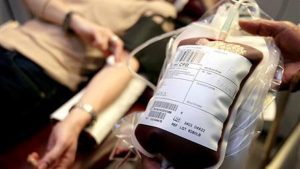At least 4 000 tuberculosis patients in the Northern Cape are unaccounted for and cannot be traced by the provincial health department.
There are reportedly more than 80 000 missing TB patients in South Africa — of which 4189 are missing in the Northern Cape.
The numbers were reflected in the department’s first quarterly report for 2018/19. After HIV and Aids, TB is the second biggest killer in the province and the two infectious diseases have close ties.
The Northern Cape health department has admitted that they have known about the 4-thousand untraceable TB patients, since research was commissioned on the infectious disease two years ago.
To date, the patients haven’t been found.
The department doesn’t know how many of these TB carriers are multi and extreme drug resistant cases.
Furthermore, the department admits that TB tracer teams hired to ensure that patients across the province continue their medicinal regiments have been disbanded because they are unbudgeted for.
South African National Tuberculosis Association acting CEO, Piet Mabulane says the health department has serious questions to answer.
“What it means is that we have 4000 people who are busy spreading tuberculosis everyday. The question is what kind of tuberculosis are they spreading? Are they spreading the normal TB of the lungs or are they spreading the MDR and XDR? It’s very scary. Let me say, one person can infect plus minus ten people everyday. So you can work out the numbers.”
Despite the possibility of the rapid spread of the infectious disease — the department says there’s no cause for alarm. Health department spokesperson, Lebogang Majaha says, “We don’t have a crisis as the department. We have tangible strategies that we have employed to date and those strategies are working quite well because our people are responding to treatment.”
The health department says it has embarked on a TB screening campaign across the province in order to control the spreading of the infectious disease.






